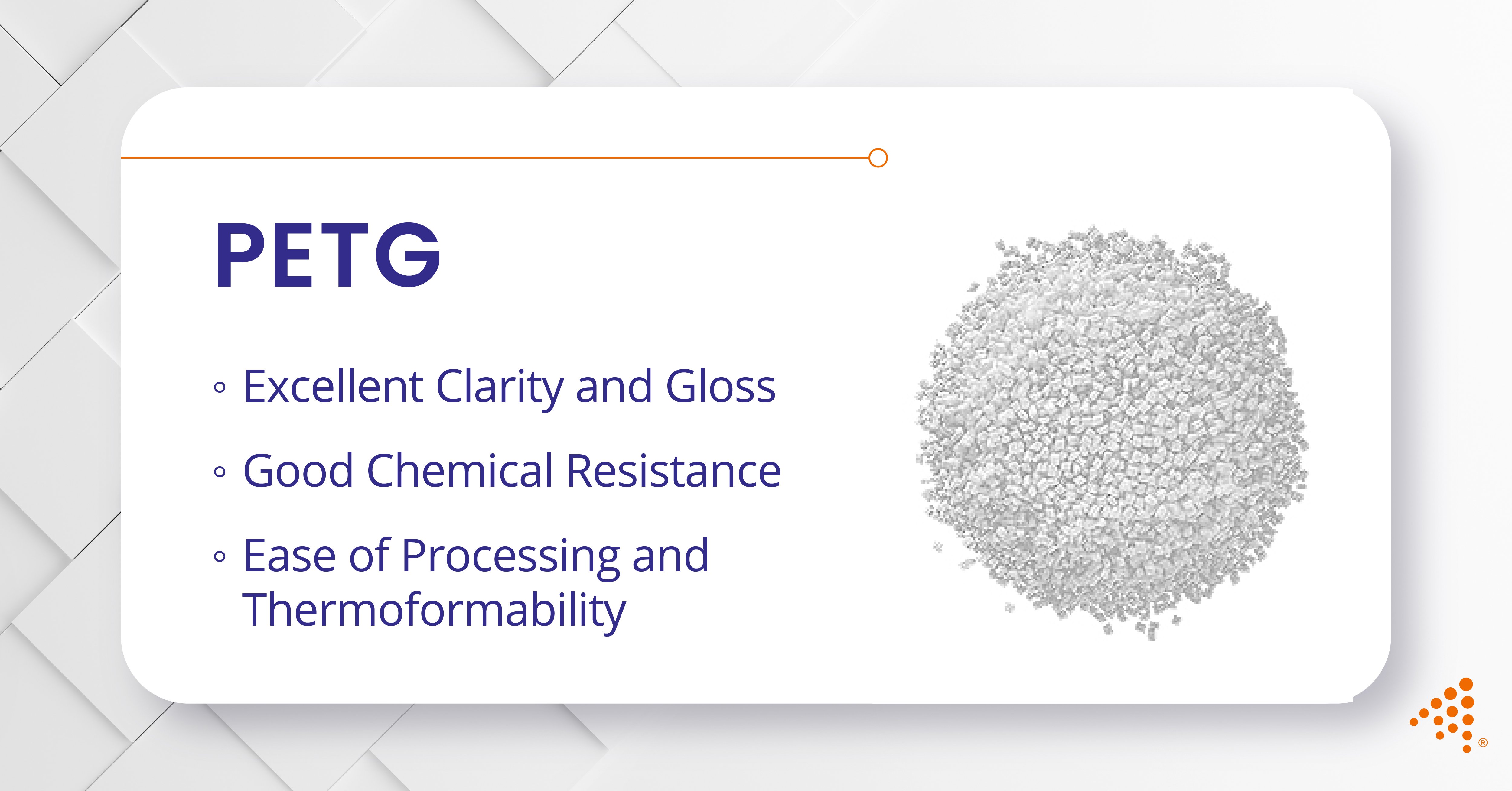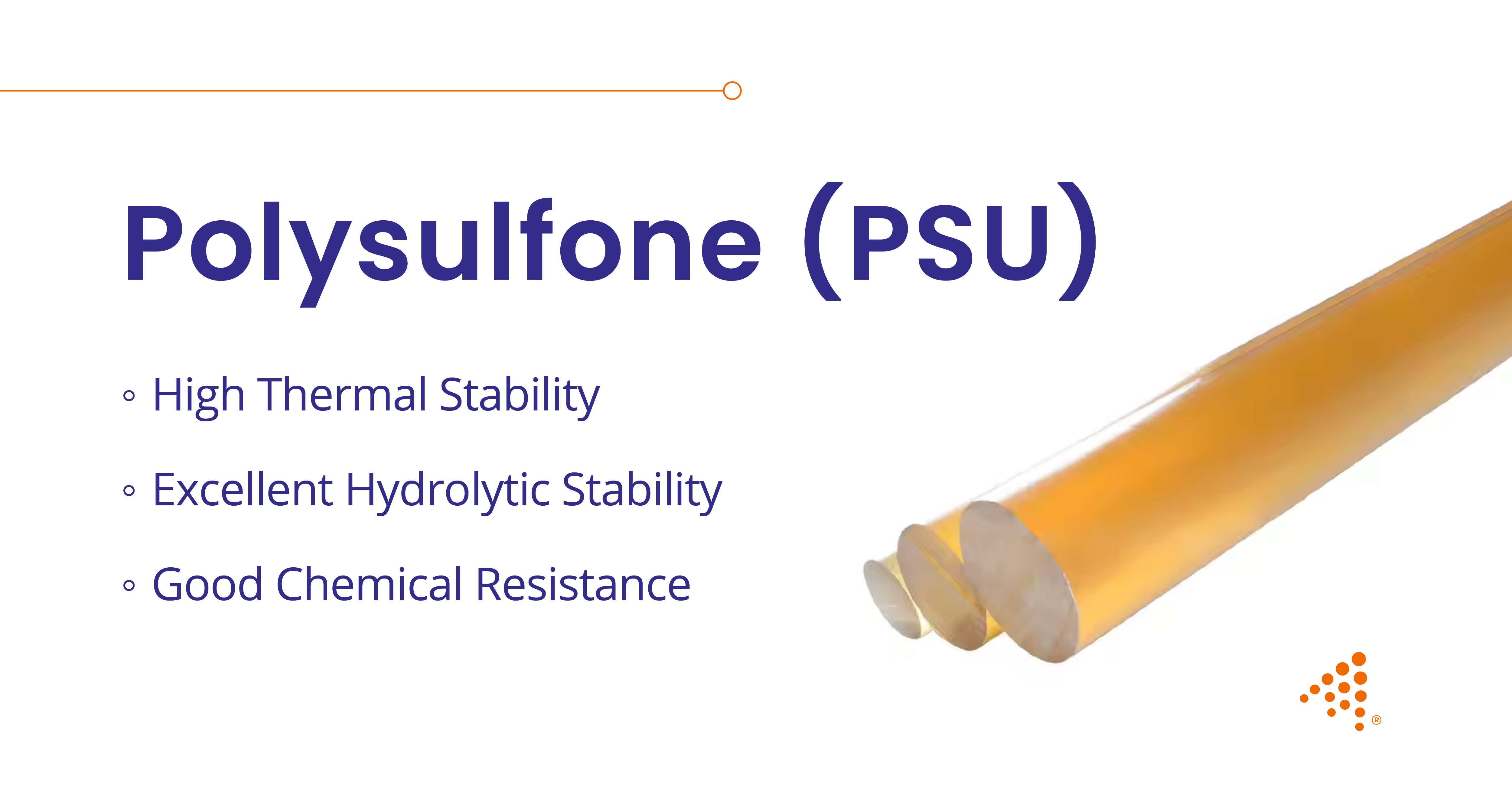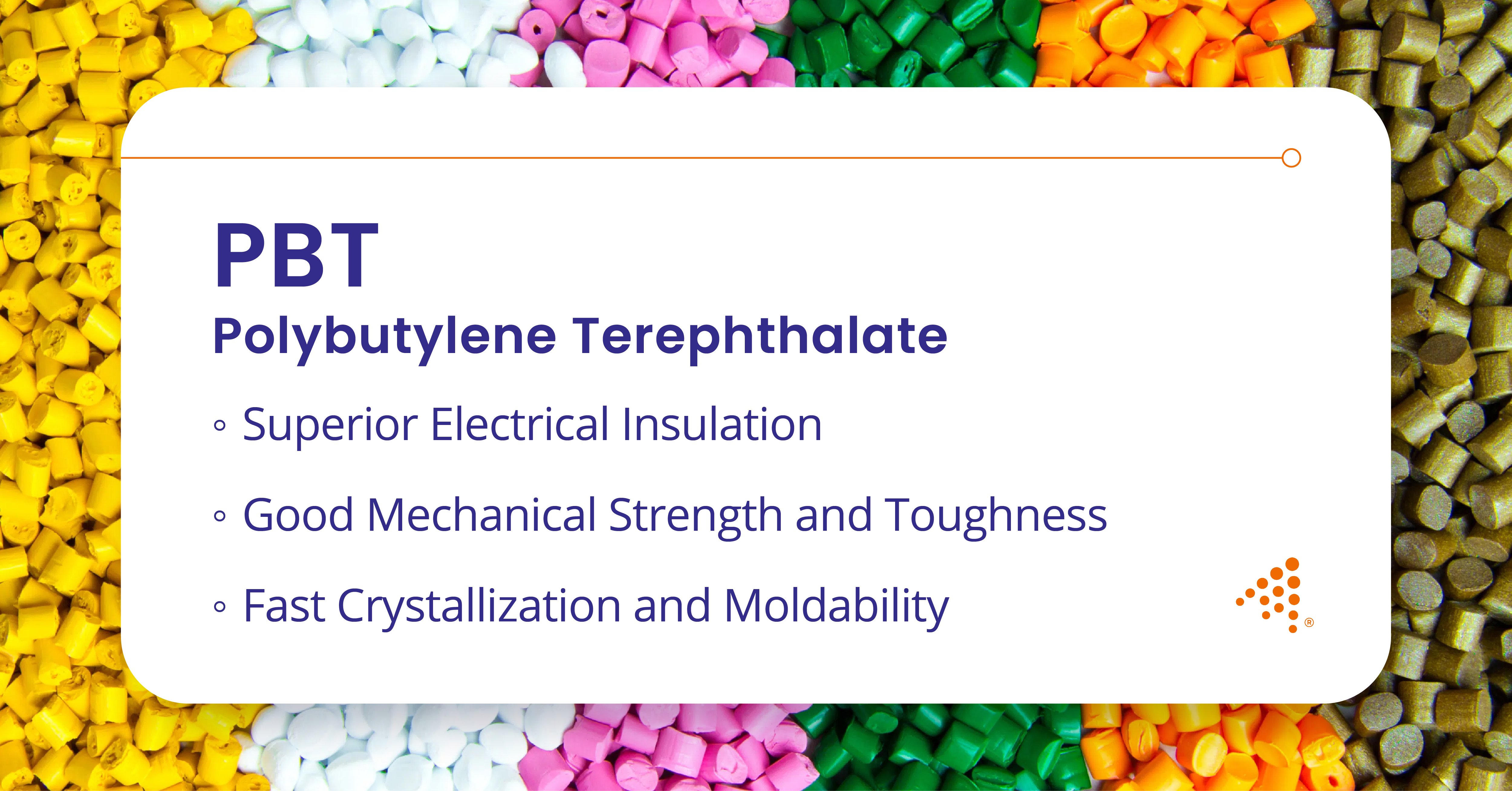Guide to Polysulfone (PSU) Resin for Tough Applications
Polysulfone (PSU) is a high-performance, semi-transparent thermoplastic known for its exceptional thermal stability, mechanical strength, and...
5 min read
Nick Erickson : Jun 9, 2025 9:23:00 AM

Polyethylene terephthalate glycol (PETG) is a versatile thermoplastic polyester resin gaining significant traction across various industries due to its high performance in design and manufacturing services. As a glycol-modified version of standard Polyethylene Terephthalate (PET), PETG offers a unique combination of properties, including excellent clarity, good chemical resistance, notable toughness, and ease of processing. These attributes make it a valuable material choice for applications ranging from medical devices and packaging to consumer products and displays, bridging the gap between ease of use and robust performance.
PETG inherits many desirable traits from PET but modifies others through the addition of glycol during polymerization. This molecular alteration results in a material that is easier to process and often tougher than its predecessor.
One of the standout features of PETG is its superior impact resistance compared to standard PET and even some other transparent polymers like acrylic. The glycol modification makes the material less brittle, allowing it to withstand significant impacts without cracking or shattering. This inherent toughness makes it suitable for applications requiring durability and resilience against physical stress, such as protective guards or high-use consumer items.
Similar to PET, PETG offers exceptional optical clarity and can be processed to achieve a high-gloss surface finish. While potentially slightly less transparent than PET in some grades, its glass-like appearance is highly valued for environments where visibility of the contents or aesthetic appeal is crucial, such as retail displays, packaging, and medical device prototypes.
PETG exhibits good resistance to a variety of common chemicals, including many acids, bases, alcohols, oils, and solvents. This characteristic is particularly important in medical and laboratory settings where components may come into contact with bodily fluids, cleaning agents, or various reagents. Its resistance helps maintain the integrity and safety of the products it's used in.
The glycol modification in PETG lowers its melting point and inhibits crystallization compared to PET, resulting in a wider processing window for techniques like injection molding, extrusion, and rapid prototyping services. It forms well at lower temperatures and doesn't typically require pre-drying as extensively as PET, although proper drying is still essential for optimal results in demanding processes like injection molding. This ease of forming allows for the creation of complex shapes with good dimensional stability.
Certain grades of PETG are compatible with common sterilization methods used in the medical industry, including gamma radiation, ethylene oxide (EtO), and electron beam (E-beam) sterilization. While generally not suitable for autoclaving due to its moderate heat resistance, its compatibility with other methods makes it a viable option for single-use medical device packaging and components requiring sterility.
PETG is often available in grades that comply with FDA regulations for food contact applications. It does not typically contain Bisphenol A (BPA), making it a popular choice for food containers, beverage bottles, and other packaging where safety is paramount. This makes it a preferred choice for ISO-certified manufacturing companies working with FDA-compliant manufacturing standards.
Contact Aprios today for custom manufacturing services backed by our ISO-certified manufacturing team and injection molding quality control expertise.
PETG's blend of clarity, toughness, chemical resistance, and processability makes it suitable for a diverse array of applications across multiple sectors.
The medical industry frequently utilizes PETG due to its rigidity, clarity, chemical resistance, and ability to withstand sterilization processes like gamma and EtO. It is commonly used for thermoformed packaging such as blister packs and trays for medical instruments and implants, ensuring product visibility and protection. Its toughness and biocompatibility (in specific grades) also make it suitable for diagnostic equipment components, test tubes, and fluid containers. The material performs well in medical injection molding processes, creating precise and durable parts.
Meeting FDA requirements for food contact, PETG is widely used for items like drinking bottles, cooking oil containers, food storage containers, and packaging for cosmetics. Its clarity showcases the product, while its impact resistance provides durability during transport and handling.
The ease with which PETG can be formed, printed on, and colored makes it ideal for retail displays, stands, and signage. Its clarity and gloss provide an attractive finish, while its impact resistance ensures longevity in busy retail environments.
Offering a balance between the formability of acrylic and the impact strength closer to polycarbonate (though generally lower), PETG is used for machine guards, safety shields, and protective enclosures. Its clarity allows visibility while protecting operators or sensitive components.
PETG has become a popular filament material for Fused Deposition Modeling (FDM) 3D printing. It offers a good balance of strength, temperature resistance (higher than PLA), and ease of printing compared to materials like ABS. It's used for functional prototypes, tooling, and end-use parts requiring durability and chemical resistance.
Read More About Injection Molding Defects: Discoloration – Why It Happens and How to Avoid It
While standard PETG offers a strong property profile, additives and modifications can further tailor it for specific application requirements, including those needed for precision injection molding.
Like PET, PETG readily accepts colorants and pigments, allowing for a wide range of opaque, translucent, and transparent colors. This is essential for branding, product differentiation, or functional color-coding in medical or industrial parts.
Although naturally more UV resistant than some plastics, prolonged exposure can still cause degradation. UV stabilizers can be added to enhance PETG's performance in outdoor applications or environments with high UV exposure, helping to maintain clarity and mechanical properties over time.
While already tough, impact modifiers can be incorporated to further enhance PETG's resistance to cracking, especially at lower temperatures or for applications demanding extreme durability.
In thermoforming use cases, particularly for packaging trays designed to stack, denesting agents (like silicone or specialized co-extruded layers) can be added. These reduce the tendency for parts to stick together, facilitating automated handling and separation.
For situations requiring increased stiffness or structural integrity beyond standard PETG, reinforcing fillers like glass fibers could potentially be compounded, although this might compromise clarity and impact strength. Such modifications are less common than for PET but possible for specific engineering needs.
Read More About Guide to Optimal Material Choices for Injection Molding
Despite its advantages, PETG has limitations that designers and engineers must consider.
PETG generally has a lower heat deflection temperature compared to materials like polycarbonate. Its typical maximum continuous use temperature is around 70°C (158°F), making it unsuitable for end uses involving high heat or steam sterilization (autoclaving).
Compared to materials like acrylic or glass, PETG's surface is relatively softer and more prone to scratching and abrasion. This can be a limitation for applications where optical clarity must be maintained despite surface contact or cleaning.
Like PET, PETG is hygroscopic and absorbs moisture from the environment. This moisture must be removed through proper drying procedures before melt processing (like injection molding) to prevent hydrolytic degradation, which can reduce mechanical properties and cause visual defects in the final part.
While resistant to many common chemicals, PETG can be attacked by strong acids, bases, ketones, and certain solvents. Compatibility testing is crucial for applications involving aggressive chemical exposure.
PETG offers a compelling combination of properties that make it an excellent choice for a wide variety of applications, particularly where a balance of clarity, toughness, chemical resistance, and ease of processing is required. Its ability to be easily thermoformed, fabricated, and sterilized (via gamma or EtO) makes it highly valuable in the packaging and medical device industries.
For injection molding projects, its good flow characteristics and dimensional stability allow for the production of intricate and durable parts. PETG serves as a versatile and often cost-effective alternative to materials like polycarbonate or acrylic when high impact strength, chemical compatibility, and regulatory compliance (like FDA food contact) are key requirements. Its growing use in 3D printing further highlights its adaptability for both prototyping and functional part production.
At Aprios, we can help you choose the right PETG material for your specific needs. Get in touch for expert advice and solutions tailored to your project!
You can also view our Material Selection tool.

Polysulfone (PSU) is a high-performance, semi-transparent thermoplastic known for its exceptional thermal stability, mechanical strength, and...

Polyphenylene Ether (PPE), also sometimes known commercially as Polyphenylene Oxide (PPO), is a high-performance amorphous engineering thermoplastic...

Polybutylene Terephthalate (PBT) is a high-performance thermoplastic resin known for its chemical resistance, moderate heat tolerance, and strong...